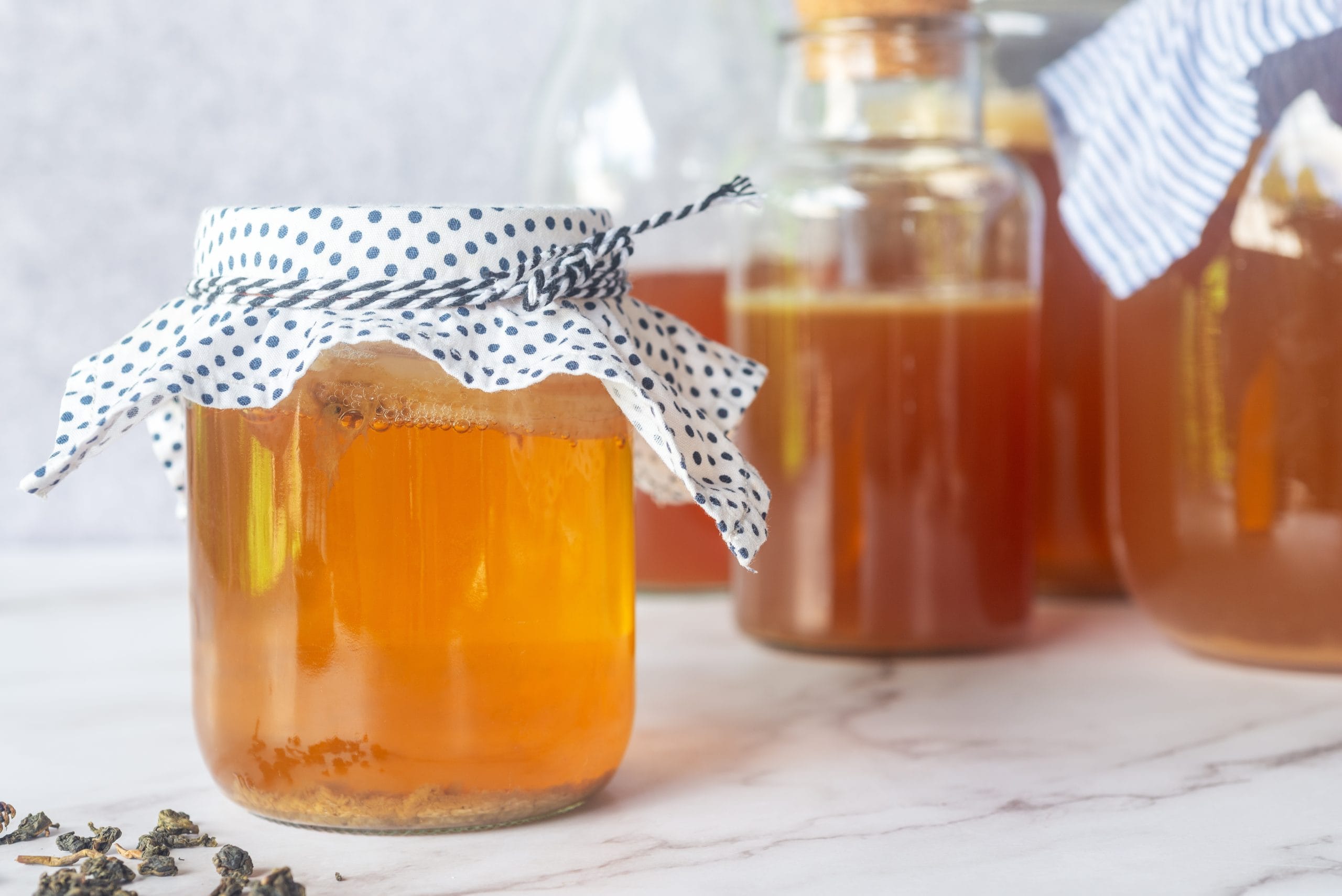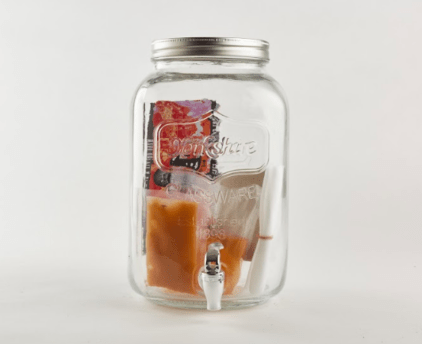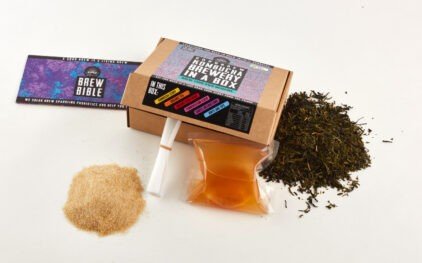
While kombucha is often marketed as a probiotic-rich health drink, many bottles on supermarket shelves have been filtered, pasteurised or stored in ways that destroy the very microbes your gut needs.
If you’re wondering whether your kombucha still has real probiotic value, this guide breaks down five clear signs it might be dead, and what to look for instead.
5 Signs That Your Kombucha Might Be Dead
These simple signs can help you separate the real, living brews from the shelf-stable imposters.
1. It’s Shelf-Stable (Not Refrigerated)
Live kombucha needs to stay cold. The beneficial bacteria and yeasts inside are active and sensitive to heat. If your kombucha is sitting in a warm aisle or has a months-long shelf life at room temperature, it’s likely been pasteurised — killing off the microbes that make it functional.
Spot the real thing: Kombucha that’s alive will always be stored in the fridge. If it’s on the shelf next to soft drinks, it’s probably just fizzy tea.
Learn more about the role of cold storage in our What Is Kombucha article.
2. There’s No Sediment or Floaties
It might look strange at first, but those stringy bits at the bottom of the bottle? That’s a good sign. Natural kombucha, especially when it’s raw and unfiltered, often contains sediment, yeast strands or SCOBY remnants — all evidence that the culture is still alive.
Red flag: Clear kombucha with zero sediment has likely been filtered or force-carbonated.


3. The Ingredients List Looks Too Clean (Or Too Complicated)
Real kombucha is made from just a few things:
- Filtered water
- Tea
- Sugar (used during fermentation)
- SCOBY (live cultures)
- Optional: herbs, spices or whole fruit
If your bottle includes:
- Natural flavours
- Stevia, erythritol or “zero sugar” labels
- Vitamins, shelf-life stabilisers or preservatives
…it’s likely a manufactured beverage made to mimic kombucha, not the real deal.
Tip: Check for “raw,” “unpasteurised,” and “live cultures” on the label – and beware of vague marketing phrases like “fermented sparkling tea.”
Curious about home-brewing? Our guide on How to Brew Kombucha at Home shows you how to make authentic kombucha from scratch.
4. The Fizz Is Too Sharp or Feels Artificial
Naturally fermented kombucha produces bubbles during secondary fermentation — the same way champagne develops fizz. The result is usually a gentle, champagne-like carbonation.
Force-carbonated kombucha (injected with CO₂ like soft drink) tends to feel sharper and more aggressive. This is common in mass-produced brands that bottle flat kombucha and carbonate it later.
Real brew test: When you open the bottle, does it hiss softly and have a gentle fizz? Or does it explode like a soft drink?


5. It Tastes More Like Cordial Than Fermented Tea
Real kombucha has a complex flavour: slightly tangy, mildly sweet, and often with a subtle vinegar-like finish. That’s the result of sugar being consumed by the SCOBY during fermentation, and it means the probiotics are active.
If your kombucha is overly sweet, has no acidity, or tastes like flavoured cordial, it may:
- Be under-fermented
- Contain added sugars post-brewing
- Have little or no live culture remaining
Gut check: If it tastes like juice or lolly water, it’s probably missing the microbes your gut needs.
Want to see what real kombucha ingredients and taste profiles look like? Explore our raw kombucha range brewed the traditional way – unfiltered, unpasteurised and always cold-kept.
Real vs Dead Kombucha Checklist
| Checkpoint | Real Kombucha | Dead Kombucha |
| Storage | Refrigerated | Shelf-stable |
| Sediment | Present (yeast strands, cloudiness) | Clear and filtered |
| Ingredients | Tea, sugar, SCOBY, optional whole flavourings | Sweeteners, flavourings, preservatives |
| Fizz Type | Gentle, naturally carbonated | Sharp, force-carbonated |
| Taste | Tangy, fermented, lightly acidic | Sweet, syrupy, juice-like |
Does pasteurised kombucha still have benefits?
Very few. Pasteurisation kills the live cultures. Some brands add lab-grown probiotics afterward, but this doesn’t match the microbial diversity of traditional fermentation.
How can I tell if kombucha is still alive?
Check for live culture wording on the label, visible sediment in the bottle, and whether it’s kept cold. Natural fizz and a tangy taste are also good signs.
Is sediment in kombucha safe to drink?
Yes — it’s a natural byproduct of fermentation and a sign your kombucha is alive. It includes yeasts, cultures and sometimes strands of SCOBY.
Why do some kombuchas last so long unrefrigerated?
They’ve usually been pasteurised to kill bacteria and yeasts. This extends shelf life, but also removes the probiotic benefit.
Can I revive a “dead” kombucha by leaving it out?
No. Once pasteurised or filtered, the microbial life is gone. You can’t bring it back.
Don’t waste your time with shelf-stable “kombucha” that’s more soft drink than fermented tea. Good Brew is made the traditional way — raw, bottle-conditioned, and alive with over 200 verified microbial strains.
Shop our kombucha range and see what real kombucha should look, taste, and feel like.

 54 Hope St, Brunswick VIC 3056
54 Hope St, Brunswick VIC 3056
